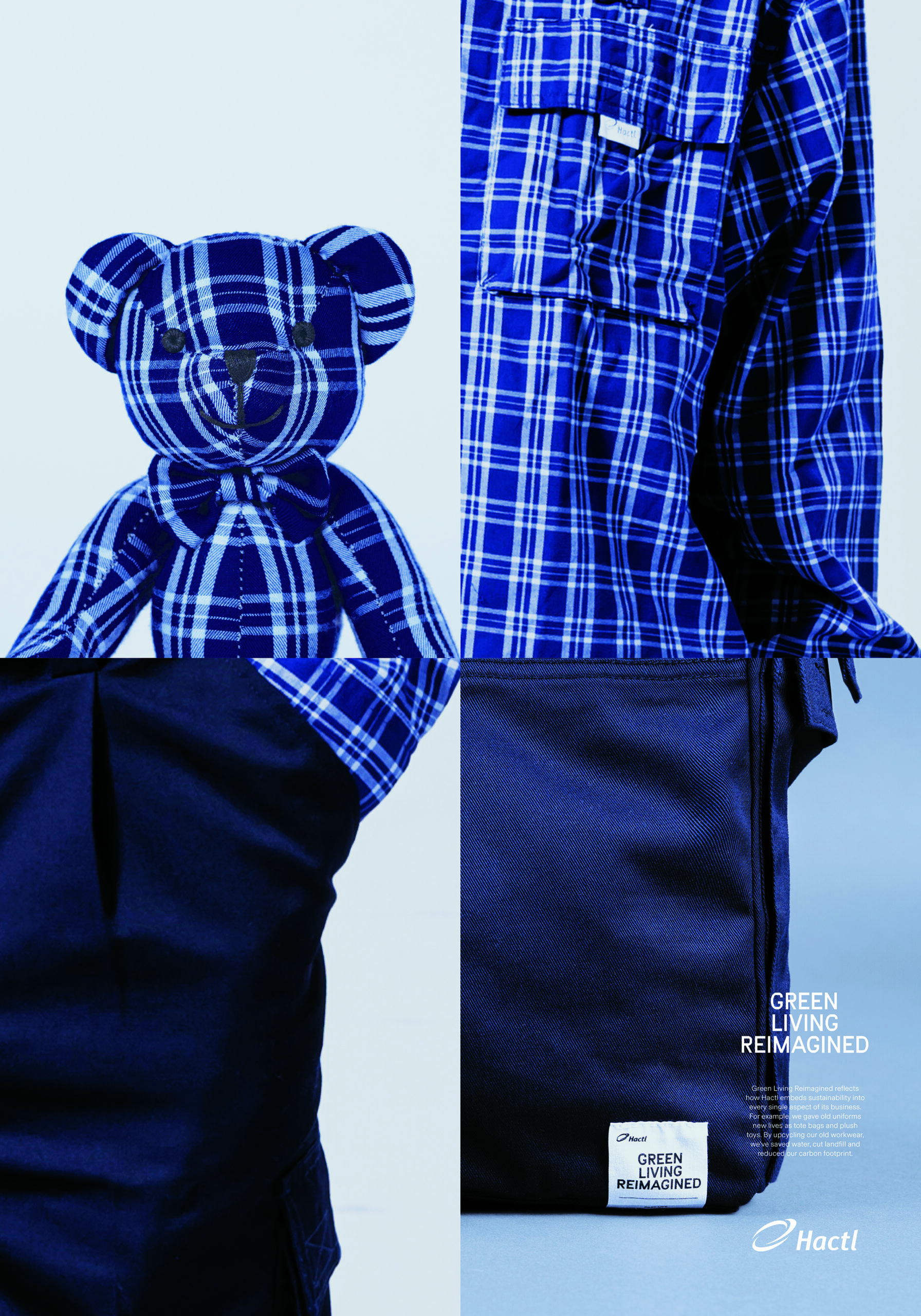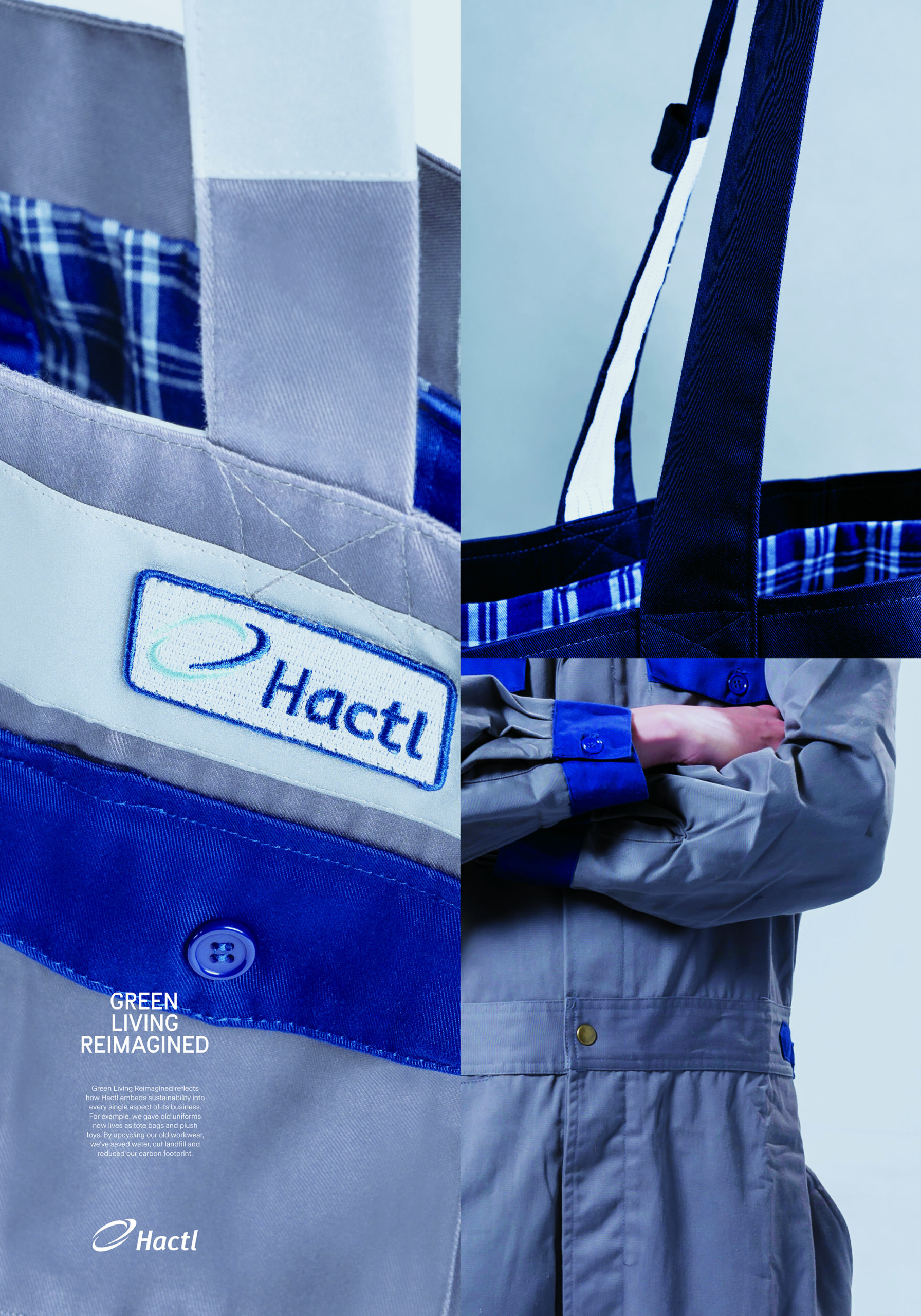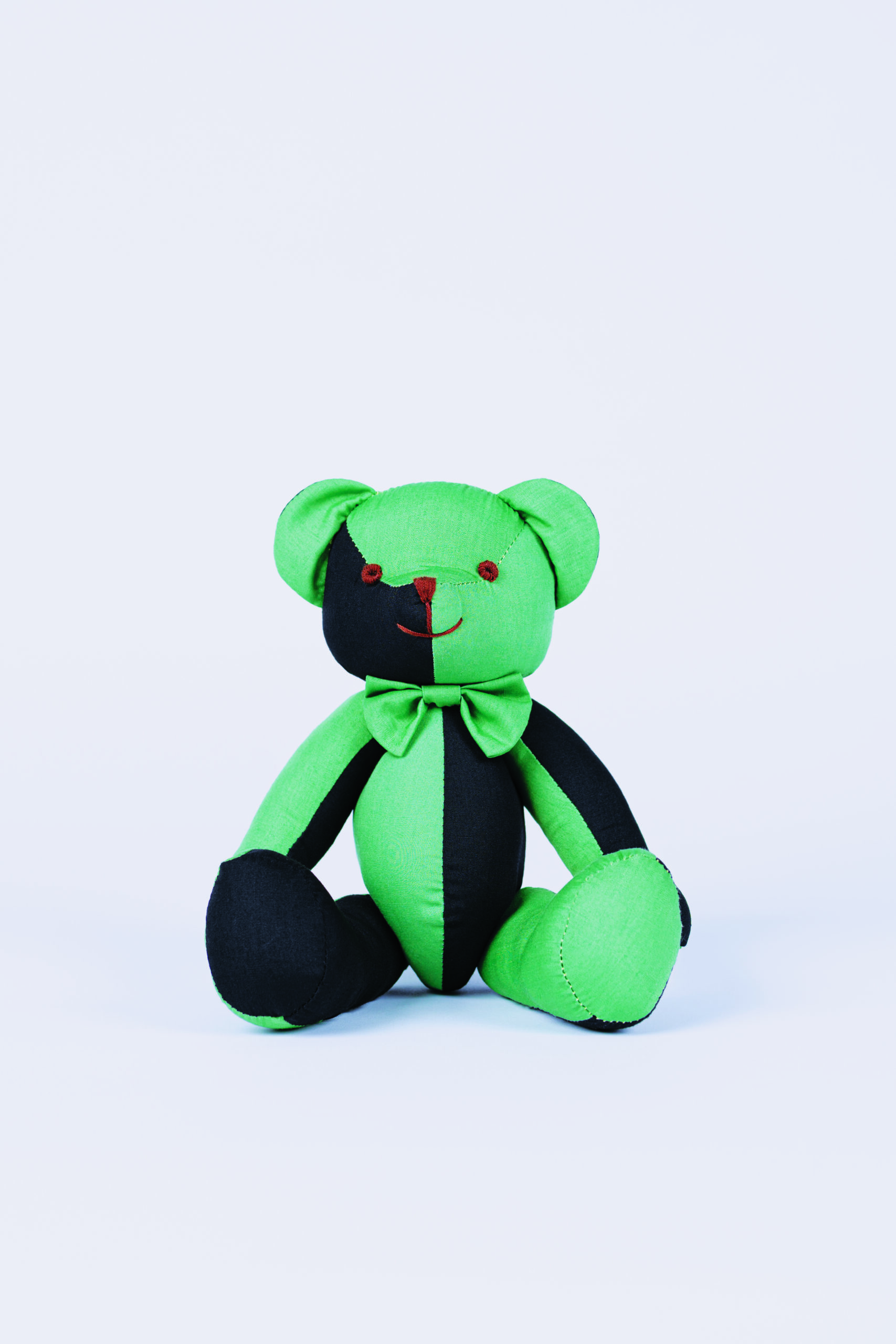When we purchase new clothes, do we ever stop to think that enough old clothes to fill a refuse truck are thrown away every second around the world? With economic growth and fast fashion trends, global textile waste has become a serious issue, with only 12% of all garment materials being recycled. According to the Hong Kong’s Consumer Council, the recycling rate of textiles in Hong Kong was around 7.6% in 2020.
Hactl is dedicated to sustainable development, fulfilling environmental protection and social responsibility in all facets of its business. In the first quarter of 2023, Hactl launched a new uniform for its frontline staff for the first time in over 20 years, delivering a considered and comfortable design to colleagues. But the old uniforms were not sent to landfill: with creative thinking, they were given a useful second life.
In sustainability terms, transforming something old into something new is invariably the best option. So Hactl teamed up with a fashion designer and a local non-profit organisation to produce designs for totally new products using the unused old uniforms. These were carefully cut to pattern and sewn, resulting in useful bags and cute teddy bears. The first batch of 700 bears and 170 bags has already been completed.
Jonathan from Hactl’s Learning and Development department was touched when he received the upcycled teddy bear, which was produced from the blue and white shirt of the supervisor’s old uniform. Jonathan has worked at Hactl for 23 years — initially on the frontline, where he wore a uniform every day. “Many of the uniforms now being transformed into teddy bears are the ones I have worn, and have become part of my everyday life. Hactl introduced the new uniform for us this year, but the memories and sentiments attached to the old uniforms linger.”
Second life
Periodic renewal of uniforms is an inevitable event for many corporations, and there are usually many more uniforms than employees, due to the need for spares and replacement. However, very few companies consider that their old uniforms will become waste, and burden the environment and landfill. When a new design is introduced, what happens to the unused uniforms in the stock?
From the outset of the new uniform project, Hactl was determined to resolve this issue, and explore a second life for its old uniforms. After stocktaking, Hactl had over 8,000 unused old uniforms. At present, there are no established procedures or systems to handle such old uniforms in Hong Kong. Ordinary clothes recycling schemes do not accept uniform donations, so the question of what to do with old uniforms is a tough one.
Lo Sing-chin (Sing), the fashion designer who has been leading the new uniform project, confirms that very few organisations are proactive about recycling or upcycling their old uniforms. By contrast, he found collaborating with Hactl on its uniform replacement both innovative and inspiring:
“Environmentally friendly is more than a slogan. We cannot achieve it by simply making something, so we truly wished to upcycle the old uniforms into useful items or cherished gifts,” Sing says. After much research and exploration by Hactl and Sing, they decided to upcycle the old uniforms into various designs of bags for shopping or travel, while using smaller pieces to produce cute teddy bears.
“Environmentally friendly is more than a slogan. We cannot achieve it by simply making something, so we truly wished to upcycle the old uniforms into useful items or cherished gifts.”

Accurate formula: no waste of fabric
The concept may sound good, but the manufacturing process was far from easy. Sing laughs and recalls that the team was too ambitious for this project at first: “On one hand everyone insisted on not wasting any material, not even an inch of fabric, a zip, or a button; on the other hand, we wanted users to love the new products. So four styles were designed just for the bags: large and extra-large shopping bags, a messenger bag and a cross-body bag.”
When it came to the pattern drawing process, difficulties arose. The old uniforms come in many different sizes, which means various patterns need to be drawn. “The waist widths of the trousers range from 24 inches to over 40 inches, while the inventory varies for each size,” continues Sing, who adds that he has spent considerable time sorting out the sizes and working out the most economic cutting layout.
In order to be 100% eco-friendly when upcycling the old uniform, Sing and his colleagues decided to make two small bags from each pair of trousers. “Basically, a trouser leg can make one small bag,” Sing explains. He did not waste any materials such as belts and buttons: the belt can be used to make the bottom of the bag stiffer, and easier to hold things; while the buttons can be transformed into little accessories, or added to the inner side of the bag, to make it easier to hang some small objects like keychains.
Apart from being environmentally friendly, Hactl also wanted to provide work opportunities for the disadvantaged in society. So Hactl collaborated with non-profit organisation St. James’ Settlement Jockey Club Upcycling Centre, to involve people with disabilities in the production.

“Hactl has given us an opportunity to produce products with sophisticated designs. The members were so proud after the production finished, and told their friends, ‘I made it!’”
Joining hands with people with disabilities
St. James’ Settlement Jockey Club Upcycling Centre is located at Wan Chai, which is a former sheltered workshop. It was refitted as an “Upcycling Centre” in 2015, with sponsorship from the Hong Kong Jockey Club. Sonia Tsang, the centre’s Project Manager, says the centre has a carpentry workshop and sewing room, where people with disabilities learn carpentry and sewing techniques under the supervision of technicians, to upcycle discarded materials into useful products. The process not only enhances the skills of people with disabilities, but also promotes sustainable development.
Sonia highlights that the collaboration with Hactl to transform old uniforms into attractive and practical bags has been a valuable opportunity and experience for people with disabilities. “The members of the centre have always practiced simple assembly processes during the pandemic and have not previously had a chance to make something attractive.”
Initially, some members of the centre faced difficulty in following Sing’s instructions. But Sonia recalls how all parties worked closely together throughout the whole project — Hactl, technicians from the Upcycling Centre and Sing maintained close communication. They taught the members various techniques, provided tools to assist the learning and operational procedures, and constantly reviewed whether any procedure could be simplified without compromising the design and quality of the products.
Sonia is thrilled: “Hactl has given us an opportunity to produce products with sophisticated designs. The members were so proud after the production finished, and told their friends, ‘I made it!’”
Anson from Hong Kong Air Cargo Industry Services Limited (Hacis), Hactl’s subsidiary, won one of the teddy bears in a competition, and was surprised to realise it had been upcycled from the blue and white chequered shirt of the Operations department. “The bags and teddy bears invoke a sense of familiarity. This is a truly innovative idea!” he says. Having worked for Hactl for 22 years, he has given the teddy bear a place of honour on his desk and cherishes it.


